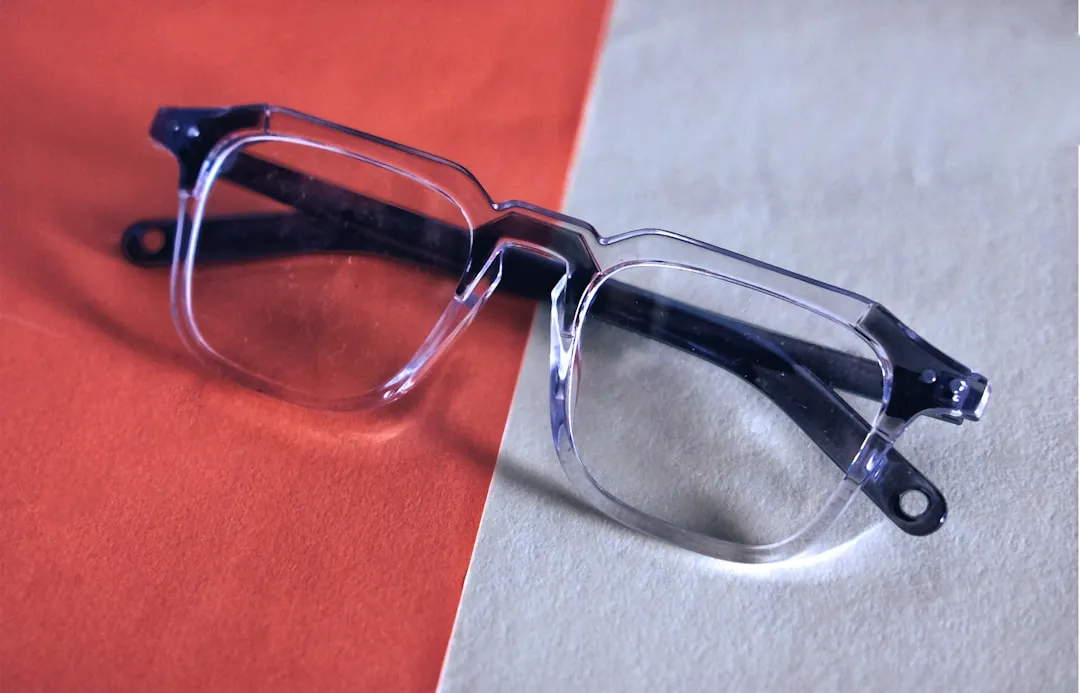How-To Guides about Horseback Riding


Neck reining is a method of guiding your horse. In this tutorial, you will be taught exactly what a neck rein is and how to perform one. Most people think they know what a neck rein is but they are actually wrong. If you would like to know the right way to rein your horse, follow along with this video and soon you'll be horseback riding like a pro.


If you are learning how to ride a horse, one of the most important things you'll need is the ability to use a saddle. In this tutorial, you will learn how to saddle up Western style and start riding like a real cowboy. This video is hosted by Jeremy, the wrangler at Vickers Dude Ranch in Lake City, Colorado, provides simple instructions on how to properly ride a horse and enjoy it. You will learn how to attach the saddle, jump up and finally how to ride properly.So, if you are just beginning...


This video teaches us the method to train a horse to lower its head. You will need a horse with lead rope tied to it. Start the training by holding the lead rope. Apply pressure on the rope in the downward direction. Hold the rope in that position by resting one of your arm on it. Keep holding the rope until the horse comes down a little. Release the pressure on the rope when the horse comes down. Apply the pressure again when the horse goes up. You can also apply the pressure at the top of the...


In this how-to video, you will learn how to tie a rope halter knot. This is useful if you are about to go horse riding. First, bring it through the loop and bring the knot under the neck of the horse. Push the loop up and then make another loop and bring the end back through it. The knot has to go around that loop. Pull it and make it go up and back. It will not slip because it is secured against the loop. This video shows you the easiest way to tie a rope halter knot for your horse.


Julie Goodnight guides you through how to safely mount and dismount a horse. First make sure you put the reigns up over the horses head. Keep the reigns in your hands so you always have control of your horse. Check the cinch on the saddle before putting your foot in the stirrup. Make sure the horses feet are square so it can properly brace when you go to mount. Stand to the front of the horse, facing the rear, so you can see the legs at all times. This will also discourage your horse from...


This is a video from the Certified Horsemanship Association (CHA). See more at CHA-ahse.org and CHAInstructors.com. In this video, Brent Morgan, Christy Landwehr, and a horse named Phoenix show us the correct riding position. In the basic, safe riding position, what you're looking for is a line from the ear, through the shoulder, through the seam of the jeans, down through the heel. That is the correct riding position. As riders, we have a tendency to let our feet slide forward like we're put...


How to saddle your horse for riding
To saddle your horse start with the pad. Fold the pad in half and put your fingers in the fold. Put the pad high up on the horses neck and slide it down into place. Use your fingers to make sure that the pad is centered on the horses back. Gently sling the saddle on the horses back and allow it come down into place. Go around to the off side of the horse and let the cinch down. Make sure you maintain contact with the horse so that he knows where you are. When...


In this how-to video, you will learn how to perform a safety check before riding your horse. Do your check on both sides. Go to the off-side first. When you go around, make sure that there is no wear or tear on parts where metal and leather connect. Go back and check different parts of the saddle, stirrups, and cinch. Start off with a bit and make sure it fits. Next, make the cheek pieces are correct and the nose band is correct. You should fit one finger underneath this. The throat latch...


First of all you have to check the breast collar which is attached and hanged to the saddle. You have to maintain safety by not ducking under the horse neck. It is better for you to go around and do your job. Keep your head away from the horse head while attaching a collar. Ask your handler to hold the horse for you. Now pick your breast collar up and reach around the horse. Don't duck under the horse head, but bring the collar belt to your side and then attach it to the ring on the saddle. Now...


Christy Lendwehr and Julie Goodnight from the Certified Horsemanship Association explain how to know when you have a fitting and correctly adjusted horse riding helmet. First and foremost, you should wear your helmet every time you ride and you should be sure that is a ASTM SEI helmet approved for equestrian riding, as they also make helmets for sports and those should not be used while riding a horse. When putting on a helmet you should be able to push it and only the wearer's eyebrows should...


First of all you need to know that there are different types of Martingale Fit. In this tutorial you are first shown a running Martingale Fit. It is attached around the neck by wrapping it. You have to make sure to wrap it around the neck in such a way that it fits to come exactly in the middle of the horse's chest. Here you have to make the connections. Now you have to go underneath the legs and attach it to the girth. You shall notice two rings hanging over from the chest. You have to attach...


Whether you are out hunting or thinking about joining a derby, you will need to learn to ride a horse first. Before you can ride, you need to saddle the horse. Check out this tutorial for information on how to saddle your pony English style, and then head out and find yourself a riding coach. Have fun!You Will Need • Grooming supplies • Saddle • Saddle pad


Rick Gore tells us how to stop a horse from walking off when you mount. The reason why a horse walks off when you mount it, it's because you trained it that way, when you've mounted previously you would allow it to mount off. Also when you mount you cause the horse to lose it's balance, and when a horse loses it's balance, it starts to walk a bit to regain it's balance. To stop a horse to from losing it's balance you should square it up, push the horse a little bit and it's feet will square up...


In this video from jumper881 we learn how to ride a horse for beginners. First mount the horse by putting your left foot into the left stirrup. Then grab onto the saddle and pull yourself up. Then hold your reigns with your pinky on the outside and your ring finger on the other one. To steer your horse, pull left reign to go left, and right reign to go right. To stop, pull back on the reigns. Not too hard though. To walk your horse, make a noise and squeeze with your heel. Keep heels...


Start your new horse with one rein and a rope halter. It makes sure your cues are clear and doesn't confuse them. The first thing to do is make sure the horse is desensitized to the rope. You should be able to toss the rope up and around its head and not have it respond adversely. When you get on top of your horse, whichever side you tug on the rope should have your horse flex in response. Its head should bend to the side. It may be daunting at first to train your horse on one rein, but doing...


This Outdoor Recreation video tutorial shows how to use your legs while riding. Rick Gore from thinklikeahorse presents this video tutorial. The way you use your legs will depend on whether you are wearing spurs or not. When you are not wearing spurs, use the bottom and top of your leg. If you want to move forward, just squeeze in both your legs. If you want to go left, give a light pressure with your right calf. Similarly, for going right apply pressure with your left calf. To move backwards,...


Rick Gore explains the differences between direct reining and indirect reining to have better control over the horse and have him go where you desire. Direct reining, also referred as plow reining, is when pressure is applied directly to the horse by pulling the rein. Apply as much pressure as you want to have the horse turn the way you want. Indirect reining on the other hand, is without pressure, laying the rein on the horses' neck to give him an indirect cue to go a certain way, instead of...


There are a lot of variations in how one cinches a saddle. The saddle should be tight but not too tight; it should not be uncomfortable for the horse, and yet the saddle shouldn't rotate. One should not move the cinch around a lot when cinching it because it irritates the horse. One wraps the leather strap through a hole in the saddle and in the cinch 1-4 times. The second rear cinch has a buckle, and for both cinches one should check that they are laid flat with no kinks or burrs. One may...
Featured On WonderHowTo:
Productivity & Shortcuts


In this video tutorial, viewers learn how to teach a horse to jog and canter under saddle. In order to teach the horse anything under saddle when you're riding them, you need to make sure that they can follow the commands on the ground. You need good groundwork before using commands under the saddle. You should prepare your horse with physical and verbal cues that you have taught it on the ground. So when you get on the saddle, it will be able to follow your commands. This video will benefit...


In this Outdoor Recreation video tutorial you will learn how to ride a horse with some basic instructions. This video is from Livestrong. The first lesson is how to create a correct back position that enhances our ability to stay balanced in a saddle. You should create a straight line from ear to shoulder to hip to heel stay right in that position. If the leg moves too far forward, you will feel you are falling back from the saddle. There should be another simple line. From the elbow to the...


In this Outdoor Recreation video tutorial you will learn how to teach a horse to back up under saddle. Teaching a horse to do anything under saddle usually starts on the ground. If your horse knows how to back up on ground then you can do it under saddle. On ground put a little bit of pressure on his nose with your hand and he will backup. Then put a little pressure on the rein and speak and tell him 'back' and he will. Then once you get on the saddle, pull the reins slightly and say 'back'. On...


To do a join-up with your horse, first drive the horse away from you to keep it moving until it is ready to join-up. A join-up may take a very long time, especially if your horse has never done one before. Keep as square to the horse as you can. Use a lunge whip, lead rope or your hands to drive the horse away but never hit or touch the horse. The join-up method creates mutual respect and communication between the rider and the horse. The horse is ready to join up by turning its inner ear...


Horseriderchamp productions presents this video on how to do join-up with a horse. Here, in this video, the lady demonstrates this with her one year old horse 'majestic. She says that join-up is basically creating bond or relationship with your horse and there are three signals to join-up. The first signal she says is to have horse's one ear locked on you when they start to look on you and start to make small circles, and she says that once you get the signals, when you turn to speak to them...


Equestrian events have been a part of the Olympic games since 1900. Learn how to train a horse for various equestrain speed events with tips from an expert horse trainer in this free equestrian video series.
Featured On WonderHowTo:
Music & Audio


In this how-to video you will learn to straddle a horse and even to play polo. Polo is a very hard sport to play, and takes a lot of coordination. Have fun, and be safe.


This how-to video shows what barrel racing is and how-to do it. This is the only woman sport at a rodeo, and is very difficult to do. This video gives helpful tips on what to do, and how to do it.


Check out this 4 1/2 minute amateur instructional video on how to saddle and bridle your horse, as well as how to untack your horse. Begin by placing the saddle bag on the horse's back. Lay the saddle gently over the saddle pads. Watch this how-to video to learn more!


Watch this video to learn how to set up the second level of the pessoa lunging training system.


how to
How to Apply standing wraps Angelea goes over the basics of applying standing wraps to horse legs. Remember, if you haven't done this before, do so for the first time in front of a trainer or vet.


Have you just bought your first horse and don't know the first thing about what else you need? This video discusses the different types of saddles, bridles, girths and other things you might need to get yourself and your first horse "in the tack". This episode also discusses styles of saddles and touches on saddle fitting for more seasoned equestrians!
Featured On WonderHowTo:
Augmented Reality


Learn how to rope cattle with a lasso like done in rodeo.


how to
How to Tie a cow hitch knot You see this one in old westerns all the time when the gunslinger hitches his horse outside the saloon. It's sort of the cowboy equivalent of parallel parking.


how to
How to Ride a horse A nice video to learn the do's and don'ts of riding horses.


Ty Murray gives a quick PBR 101 breakdown on the sport of bull riding in rodeo.


Clint from Downunder Horsemanship shows you some techniques and exercises for controlling your horse's speed when riding. DIRECT VIDEO DONWLOAD


Maylyn McEwan describes how to improve your classical seat in horseback riding. She explains the following: the correct position, benefits, correcting the chair position, correcting lower leg problems, correcting upper body problems, correcting hip problems, correcting hand problems, and maintaining your good classical seat. Whether you're a novice or an experienced rider, this video is essential for improving and perfecting your classical seat.
Featured On WonderHowTo:
Gaming


how to
How to Groom your horse Maylyn McEwan describes how to give a horse a perfect groom. She says you must clean the hooves, remove any dirt and sweat marks, remove hair and promote circulation, remove any dirt and grease, groom the head, brush the mane, brush the tail, sponge the eyes, nose, and clock, lay the mane and tail, strap your horse, and oil the hooves. There are many benefits to grooming your horse. It improves your horse's health; promotes muscle tone and circulation; strengthens the bond between horse and...


how to
How to Strap your horse Maylyn McEwan describes how to strap your horse without harming it. She says you should strap the neck, shoulder area, hind quarters, lower hind quarters, and then the other side. Strapping is a traditional but very effective method to promote circulation and to build muscle.


Maylyn McEwan says that a stable bandage is designed to support, protect, and provide warmth for horses. She describes how you roll the bandage, place the padding, apply the bandage, and remove the bandage.

















































































































































































